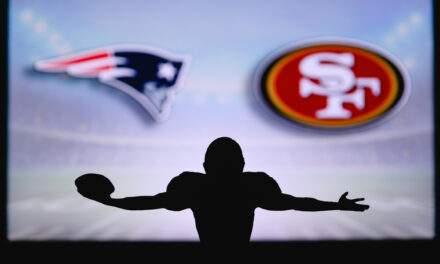In just a few hours, 68,000 screaming football fans will shuffle into Levi’s Stadium in Santa Clara to watch the 3-to-1 Cowboys square off against the undefeated 49ers.
And working hard to keep all those fans happy is a stadium staff numbering in the thousands.
These helpful folks are on hand to answer common questions like:
“Where can I get a hot dog?”
“Where’s the bathroom?”
And “Why aren’t these teams as good as the Chiefs?” (sorry, I had to).
But this year, for the first time ever, many of those questions will be fielded by artificial intelligence programs.
Working with Satisfi Labs, the 49ers have incorporated AI into its infrastructure to provide answers and assistance faster than its human staff ever could.
That’s not the only place where AI is going to work on this weekend’s big games, either.
NFL is now working with Amazon to develop a “Next-Gen Stats” program for live coverage.
Analyzing millions of data points from 90,000 passing plays over the last five years, Next Gen Stats will provide real-time analytics unlike anything we’ve ever seen in live coverage:
Check out how it works on YouTube, here.
These kinds of innovations come as a surprise to many.
After all, pro sporting organizations aren’t known for being first in line when it comes to new tech.
But in reality, the relationship between top teams, data analytics and AI stretches back over decades…
The Oakland Athletics, Sabermetrics and AI
Billy Beane — a former Major League Baseball prospect — was the general manager of the Athletics in 2001.
He was faced with the daunting task of replacing three of his best players with little to no money to do it.
After meeting with teams around the league in search of prospects, Beane met Paul DePodesta — a Harvard economics graduate working with the Cleveland Indians.
That meeting sparked a revolution in the game of baseball and set us on the path to using artificial intelligence.
DePodesta was a firm believer in using sabermetrics — live game data — to evaluate players and tactics.
Up until then, finding the right baseball player was more about a scout or manager’s instinct and less about tracked performance.
But DePodesta, with his sports and economics background, believed looking at in-game data can help predict future performance.
That was just the edge Beane needed since his budget for big players was tight.
So Beane and DePodesta used sabermetrics to find lesser-known (or even past their prime) players whose performance added up to what the team lost.
In the 2002 season, the Athletics not only won their division, but also set the record for the most consecutive games won in a regular season.
All despite losing their top talent the year before.
Sabermetrics and the Stock Market
Sabermetrics evolved the game of baseball. We’re seeing the same today as AI evolves how we invest.
It’s not about what direction the wind is blowing or how something “feels.” It’s about what the data tells us.
This is no different than using sabermetrics to see that a player is more likely to get on base during a 1-2 count versus a 0-2 count.
Like Beane and the 2002 Oakland Athletics, it wasn’t about always swinging for the fences, but more about consistently getting on base and scoring runs.
Using machine learning — where computers are trained on huge amounts of data to perform certain tasks — AI can tell us a lot about the underlying data for stocks.
Machine learning can scan social media to gauge sentiment around stocks and examine market patterns to find the best time to execute a trade.
The possibilities are endless, which is not lost on us here at Money & Markets.
Our own Chief Investment Strategist, Adam O’Dell, has been working with TradeSmith CEO Keith Caplan and his team on “Project An-E” — a trading platform that uses AI to find stocks with the greatest potential.
Adam and Keith launched their findings this week and you can get an exclusive, behind-the-scenes look at this transformational endeavor right here.
If you’re at all interested in using AI to gain an investing edge, I encourage you to check out what TradeSmith, Keith and Adam are doing with An-E.
Bottom line: Billy Beane faced the monumental task of replacing big-name baseball players with almost no money on hand.
He also faced the uphill battle of traditional baseball purists who relied on gut instinct over data.
Thanks to the introduction of AI, through sabermetrics, he conquered both.
And I believe AI is going to challenge — and beat — our conventional wisdom on investing.
Until next time…
Safe trading,

Matt Clark, CMSA™
Chief Research Analyst, Money & Markets









